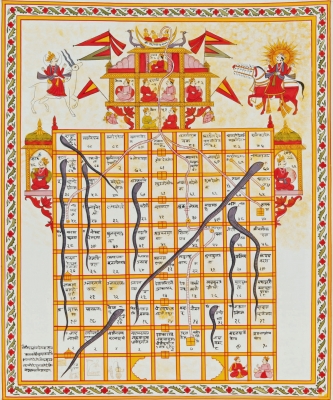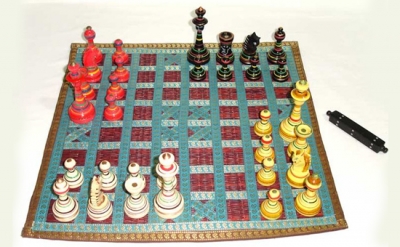How Snakes and Ladders has an ancient Indian connection?

Snakes and ladders is based on an ancient Indian morality game. It was called Gyan Chaupar by the Jains, and Moksha Patam by the Hindus. It emphasised the Hindus. It emphasised the effects of virtues, which helped one to ascend a ladder, and vices which sets one back like a snake bite. Reaching the last (100th) square represented the attainment of Moksha. A Buddhist version existed in the Pala times in early Medieval India. It was taken to Victorian England.
The modified game was named Snakes and Ladders and stripped of its moral and religious aspects and the number of ladders and snakes were equalized. In 1943, the game was introduced in the US under the name Chutes and Ladders.
Picture Credit : Google

